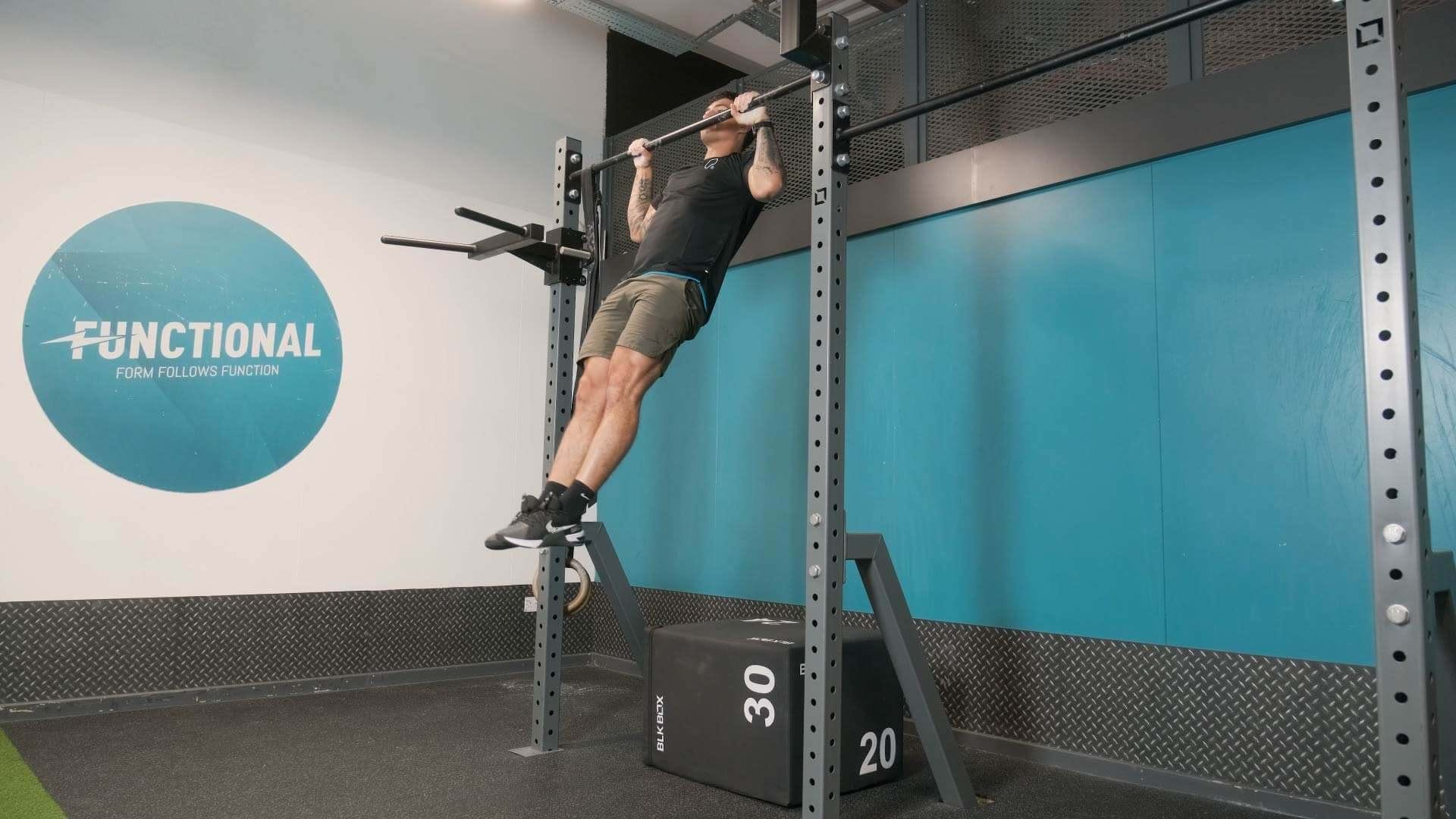Assisted Pull Ups
What are assisted pull ups?

Assisted pull ups are a variation of the pull up that uses resistance to counter the weight of the body, making it easier to perform a pull up. This is a regression which helps to build strength if you are unable to do many pull ups.
Assisted pull ups are a compound back exercise that work the muscles of your back, arms, and shoulders and can help you build up to full pull ups. You can do assisted pull ups on the gym pull up machine or with resistance bands.
Assisted pull ups are an important exercise for building upper body strength and improving grip strength, which translates into a lot of other strength exercises like deadlifts and rows. By doing assisted pull ups on the pull up machine or with resistance bands, you'll be able to get full range of motion and work towards unassisted pull ups if that's your goal.
Like all kinds of pull ups, assisted pull ups primarily target the large pulling muscles in the back (especially the latissimus dorsi), the rear shoulder muscles, and the biceps, with the core also worked.
Machine-assisted pull ups with your knees on the pad allow you to make precise weight adjustments, and offer consistent resistance throughout the movement. Resistance band pull ups give you a different kind of assistance, with more support at the bottom of the movement and less as you get closer to the pull up bar.
Assisted pull ups are good for beginners or anyone working towards unassisted pull ups, but are also a great tool for anyone looking to increase their pull up reps.
Try pairing assisted pull ups with other pulling exercises like rows or lat pulldowns, or with pressing exercises like push ups to work opposing muscle groups. Watch our demo video to see exactly how to set up the assisted pull up machine or resistance bands.
Check out some other pull up exercises: Pull Ups, Seated Pull Ups, Chin Ups
Commonly Asked Questions About Assisted Pull Ups
Alternatives to assisted pull ups include lat pulldowns, inverted rows, and negative pull ups. Lat pulldowns mimic the pull up motion using a cable machine, and inverted rows build pulling strength from a different angle. Negative pull ups (jumping up and lowering yourself down) focus on the eccentric phase of the movement to build strength.
Assisted pull ups primarily target the latissimus dorsi, the largest muscles in the back which start under the shoulder blades and run down to the pelvis and across the side of the torso. They also work the trapezius, rhomboids, and posterior deltoids in the upper back and shoulders, the biceps brachii, brachialis, and brachioradialis in the arms, and the core muscles, including the rectus abdominis and obliques, will stabilise the body during the movement, and your forearm and grip muscles will also be engaged.
To do an assisted pull-up with bands, loop a resistance band around the pull-up bar and through itself. Place either one foot or knee into the bottom loop of the band. Grasp the bar with an overhand grip, hands slightly wider than shoulder-width. Engage your core and pull yourself up, focusing on using your back muscles to drive the movement.
Assisted pull ups allow people to perform full range of motion pull ups while building strength and focusing on technique. Assisted pull ups are versatile and scalable, allowing for adjustment as strength improves. They can be used by beginners who can’t do full pull ups yet, and by advanced exercisers to increase pull up volume.
Assisted Pull Ups Tips
Select a machine weight or resistance band which allows you to perform the desired reps of pull ups. Heavier weights and thicker bands make the exercise easier.
Engage the core and allow your body to lower down until your arms are fully extended.
Drive your elbows downwards to engage your back muscles.
Gradually reduce the machine weight or use lighter bands as strength increases.
How To Do Machine Assisted Pull Ups
Stand on the steps and select a weight.
Take hold of the handles slightly wider than shoulder width.
Put both knees on the knee pad.
Lower yourself down until your arms are fully extended.
Pull your body upwards, hips in line with shoulders, until your chin is above your hands.
Lower down with control and repeat desired number of reps.
How To Do Resistance Band Pull Ups
Loop the resistance band around the pull up bar.
Step or jump up to grab the bar with an overhand grip, hands slightly wider than shoulder width apart on each side of the band.
Step your foot into the band and lower yourself down until your arms are fully extended.
Engage your core and then pull your body upwards by squeezing the elbows towards your hips. Stop once your chin is above the bar.
Hold for a breath before slowly lowering down with control.
If you’re not sure if any of the above exercises are suitable for you, please consult your doctor before you start it. Need guidance on how to perform the exercise? Ask a personal trainer at your gym.